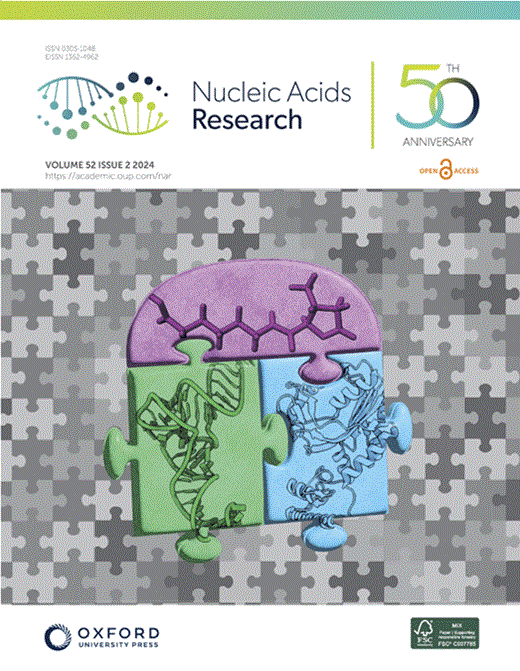Allele frequency net database (AFND) 2020 update: gold-standard data classification, open access genotype data and new query tools
IF 13.1
2区 生物学
Q1 BIOCHEMISTRY & MOLECULAR BIOLOGY
引用次数: 400
Abstract
Abstract The Allele Frequency Net Database (AFND, www.allelefrequencies.net) provides the scientific community with a freely available repository for the storage of frequency data (alleles, genes, haplotypes and genotypes) related to human leukocyte antigens (HLA), killer-cell immunoglobulin-like receptors (KIR), major histocompatibility complex Class I chain related genes (MIC) and a number of cytokine gene polymorphisms in worldwide populations. In the last five years, AFND has become more popular in terms of clinical and scientific usage, with a recent increase in genotyping data as a necessary component of Short Population Report article submissions to another scientific journal. In addition, we have developed a user-friendly desktop application for HLA and KIR genotype/population data submissions. We have also focused on classification of existing and new data into ‘gold–silver–bronze’ criteria, allowing users to filter and query depending on their needs. Moreover, we have also continued to expand other features, for example focussed on HLA associations with adverse drug reactions. At present, AFND contains >1600 populations from >10 million healthy individuals, making AFND a valuable resource for the analysis of some of the most polymorphic regions in the human genome.等位基因频率网络数据库(AFND)2020更新:金标准数据分类、开放获取基因型数据和新的查询工具
摘要等位基因频率网络数据库(AFND,www.allefrequencies.Net)为科学界提供了一个免费可用的存储库,用于存储与人类白细胞抗原(HLA)、杀伤细胞免疫球蛋白样受体(KIR),主要组织相容性复合体I类链相关基因(MIC)和许多细胞因子基因多态性。在过去的五年里,AFND在临床和科学应用方面变得越来越受欢迎,最近基因分型数据的增加是提交给另一份科学杂志的简短人群报告文章的必要组成部分。此外,我们还开发了一个用户友好的桌面应用程序,用于HLA和KIR基因型/人群数据提交。我们还专注于将现有和新数据分类为“金-银-铜”标准,允许用户根据自己的需求进行过滤和查询。此外,我们还继续扩展其他特征,例如关注HLA与药物不良反应的相关性。目前,AFND包含来自1000多万健康个体的1600多个种群,这使得AFND成为分析人类基因组中一些最多态区域的宝贵资源。
本文章由计算机程序翻译,如有差异,请以英文原文为准。
求助全文
约1分钟内获得全文
求助全文
来源期刊

Nucleic Acids Research
生物-生化与分子生物学
CiteScore
27.10
自引率
4.70%
发文量
1057
审稿时长
2 months
期刊介绍:
Nucleic Acids Research (NAR) is a scientific journal that publishes research on various aspects of nucleic acids and proteins involved in nucleic acid metabolism and interactions. It covers areas such as chemistry and synthetic biology, computational biology, gene regulation, chromatin and epigenetics, genome integrity, repair and replication, genomics, molecular biology, nucleic acid enzymes, RNA, and structural biology. The journal also includes a Survey and Summary section for brief reviews. Additionally, each year, the first issue is dedicated to biological databases, and an issue in July focuses on web-based software resources for the biological community. Nucleic Acids Research is indexed by several services including Abstracts on Hygiene and Communicable Diseases, Animal Breeding Abstracts, Agricultural Engineering Abstracts, Agbiotech News and Information, BIOSIS Previews, CAB Abstracts, and EMBASE.
 求助内容:
求助内容: 应助结果提醒方式:
应助结果提醒方式:


